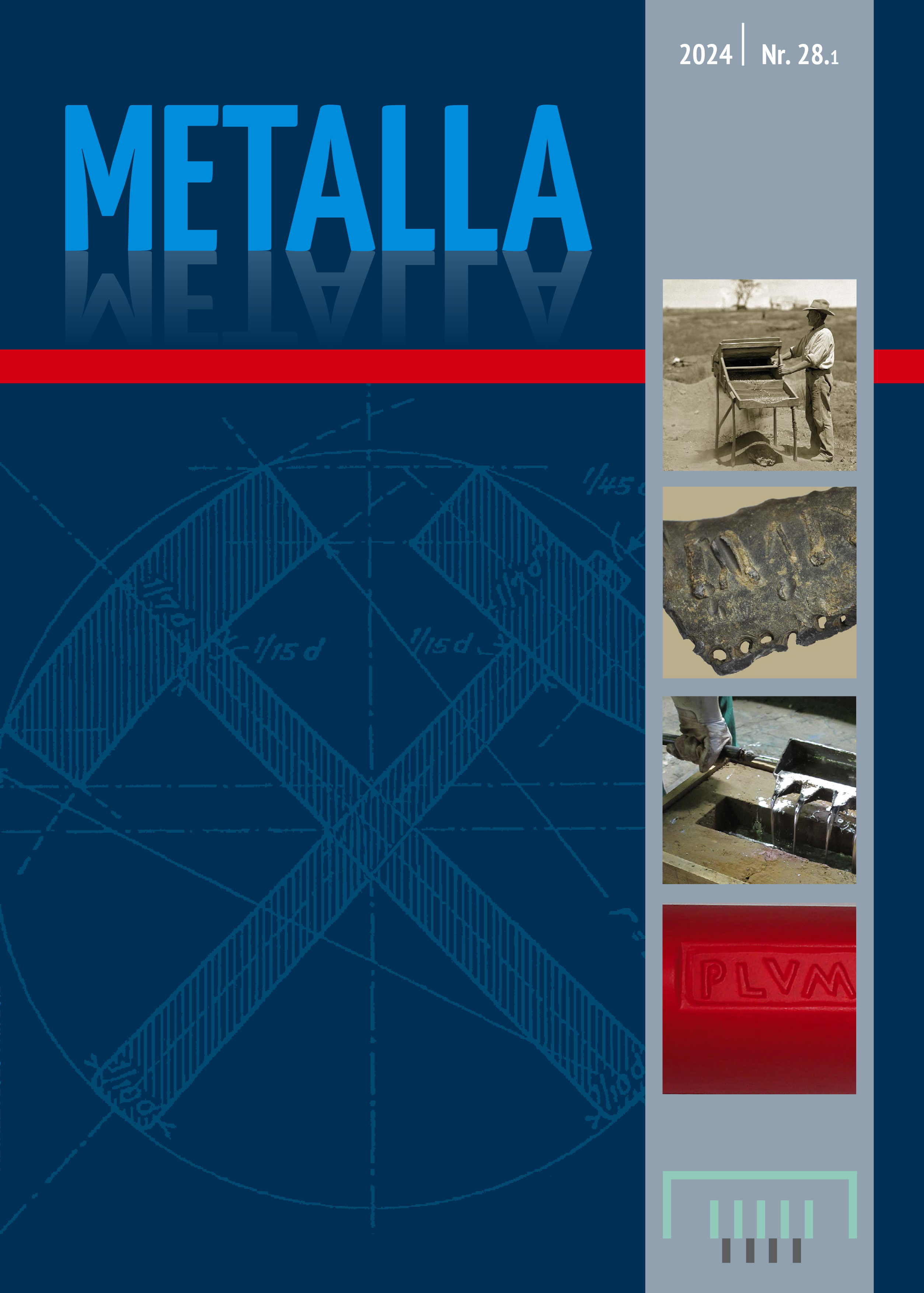Do Australian 19th Century Gold Discoveries have Implications for Interpreting Early Gold Mining Elsewhere?
DOI:
https://doi.org/10.46586/metalla.v28.2024.i1.3-21Keywords:
Australia, gold, mining archaeology, discovery case histories, production estimates, placer miningAbstract
Eight discovery histories of well-documented Australian goldfields indicate the bonanza recoveries available to “first-movers” into previously unmined areas. These have implications for how we interpret goldfields elsewhere that have been repeatedly re-worked since Antiquity and where earliest exploitation has left no clear record. Australian gold was first mined after European settlement in the 19th century, and the manual techniques in the initial stages were not substantially better than available to Bronze Age miners. Dry blowing was used extensively in both arid and seasonally dry regions, often as an initial step followed by transport to a water source. The ease of gold recovery from placers conferred a huge competitive advantage over lode gold, which required crushing and grinding. Hence, early production was generally dominated by free gold recovered from proximal settings including non-alluvial placers (residual, eluvial, colluvial, and hillslope areas). Earliest returns were often prodigious: 5 to 50 grams of gold or more per miner per day in the discovery phase, and 1-5 grams while unworked ground remained. Commonly these high returns were prolonged by “rolling rushes” in which multiple nearby gold occurrences were discovered. Nevertheless, production waned rapidly (within 2-15 years) unless major lodes or large distal placers were discovered. Early returns are not a good predictor of overall productivity: more than 90 percent of gold was recovered in the initial burst of activity on some fields. Colluvial and proximal alluvial placer mining overwhelmingly dominated early production in most Australian goldfields but leave minimal archaeological evidence. That was probably the case elsewhere in the world, where gold was first mined in the Bronze Age or earlier, and we should heed this when interpreting their earliest mining phases.
Downloads
Published
Issue
Section
License
Copyright (c) 2024 Leigh Bettenay

This work is licensed under a Creative Commons Attribution 4.0 International License.



